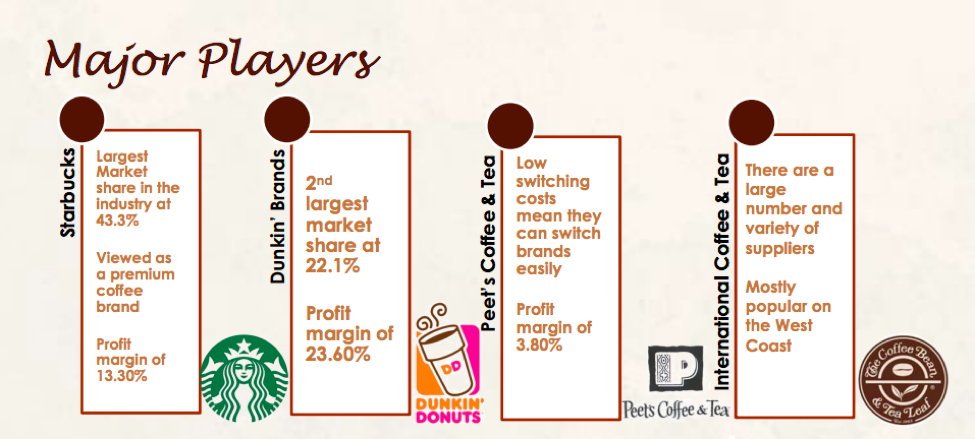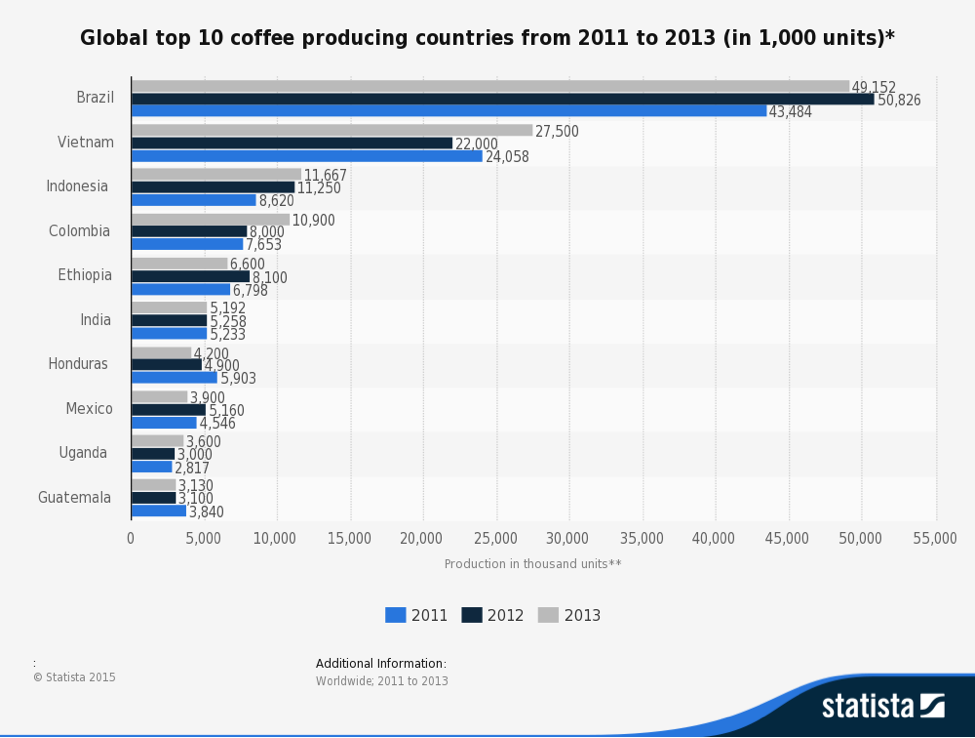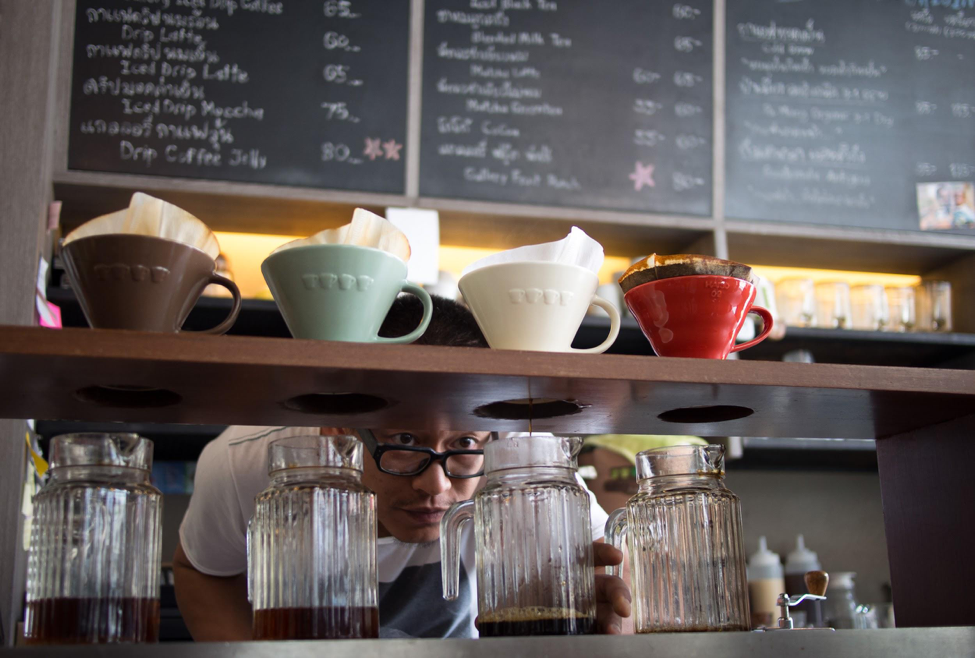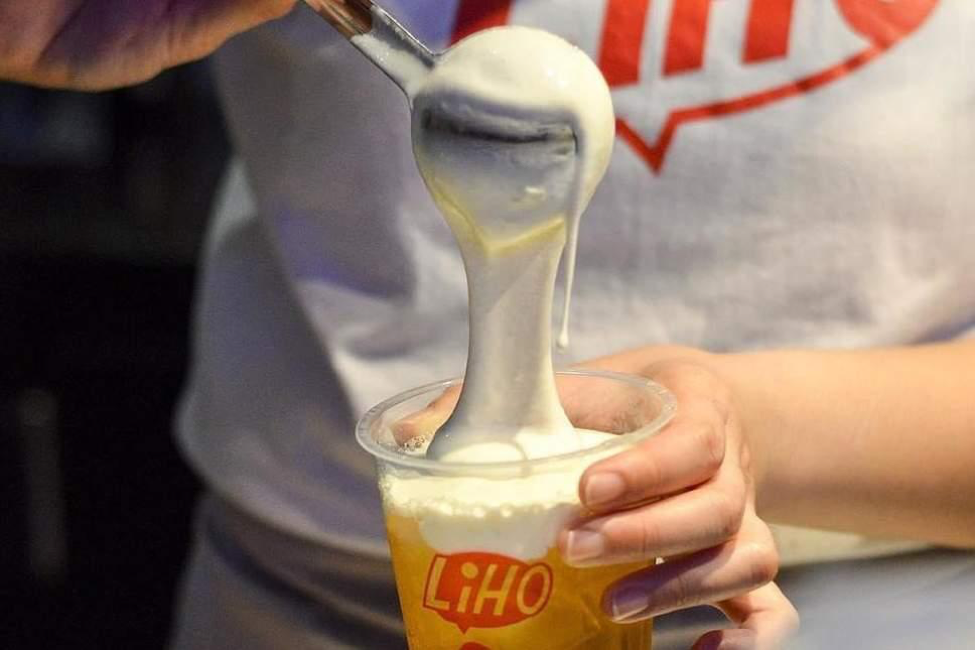- May 10, 2021
- 5:21 am
If there is one drink that is most consumed in the world after water, it is coffee. The coffee industry is booming at an exponential rate today and mushrooming more and more professional integration. We belong to the millennial generation to whom coffee is more than just a drink now – it is a way of living, an integral part of one’s lifestyle and for some it is even a luxury item.
Coffee Industry Overview

The symbolism of coffee as a way of life is the one reason why the coffee industry consistently pontifies the growth of luxury coffee brands such as Starbuck, Dunkin Donuts, The Coffee Beans, Ithaca Bakery etc. You’ll be surprised to know that Starbucks alone has 43.3% of market share in the coffee retail industry in the US with profit margin at 13.30%, followed by Dunkin Donuts with 22.1% shares and with profit margin at 23.6%.
Having said that, the coffee industry is a mature market today and there are chances of it growing five fold in the next five years. Even though the market is mostly monopolized by the premium coffee brands, the concentration of small business and local players cannot be completely ignored. A great example to this is the rising competitive price of different types of coffee.
Today, coffee as a trading industry is the second most valued commodity, which makes it an important driving force to influence the economic developments in the world. There is more than one factor that influences and controls that cup of coffee that you hold in your hand now, beginning from grower to the roaster and finally the retailer – factors that we will discuss at great length in this article to acquaint you better with how it is like to work within the coffee industry.
Element 1: Coffee Grower And Retailer
If you go by the intricate details of the economic transactions within the coffee industry, you will realize the coffee industry is bifurcated in three parts: growers, roasters and retailers. Let’s first discuss growers and retailers.
Growers
A larger part of the coffee traded globally is today supplied from countries such as Brazil, Rwanda, Colombia, Vietnam and Indonesia. So if there is even a minor change in this trade, it could monumentally affect the international trade of coffee and its price around the world.

Around 11 million hectares of farmland around the world is used for coffee farming and Brazil is one of the top players in coffee production today. So if anything affects the production of coffee in Brazil it could affect the coffee industry as a whole. You will be surprised to know that in the year 2012, Brazil alone produced approximately 3 million metric tons of coffee and the factors that affected it was: the weather, the economic changes, and the buyer’s willingness of buy. The reason why we are discussing the grower’s influence in the coffee industry first is that it is the very basic foundation of the overall industry and its structure and without this understanding you will not realize where do the retailers build their foundation from. Roaster is one section that will need in-depth explanation and understanding of its own and we will come to that later on.
Retailers

If you study the coffee industry well, you will see how retail brands such as Starbucks are pushing boundaries through their logo and in-store experience to increase their success in a highly volatile and competitive market today. On the other hand, coffee producing countries such as Rwanda are struggling to shackle the cycle of debt and underpayment. This goes a long way to create the underlying understanding that over the course of time the demand for coffee will rise two fold but the international supply and production won’t be able to meet the increase in global demands for coffee.
Regardless of what you are specializing in the coffee industry, what should be the most important buzz for you is to know what is it about your product that people are liking the most and buying it for.
The retailer section is again segmented on the basis of shops owned by roasters themselves, wholesalers and food brokers. A lot many wholesalers or roasters are accounting for a huge share of the retail coffee sales today. Whole roasted coffee is usually sold in ground form or as whole beans, they are then packaged in either cans or packets. Although soluble coffee is mostly sold in jars, the demand for sachets are gaining popularity in the market.
For a coffee shop retailer, your customers will not sit with you for a good amount of time to discuss the coffee they had. They will either have it and may be come again to drink it or they will not. You have to figure out why a coffee drinker who came to your coffee shop once is coming again to buy it from you.
Case Study: Pros And Cons For Retailers In Purchasing Coffee Equipments From Roasters VS Manufacturers
If you are a retailer who is wanting to purchase coffee equipments from a manufacturer, chances are high that you will be given a certain support in terms of warranty for whatever price you plan to buy the equipment for. Although the parts will be provided with a warranty, thereafter whatever happens of it you, as a retailer, will be responsible for it.
On the other hand, if you are planning to buy from a wholesaler or directly from a roaster, they should ideally be able to provide you with the basics of installation, maintenance and repair, and should also be willing to handle the warranty of the parts. However, in doing so, the roaster would expect you to abide by the rule of Coffee Service Model, which means in exchange for the equipments you buy you have to be committed to selling a certain amount of coffee from their brand alone that will be slightly higher than the other brands you serve. This kind of exchange is best and lucrative for coffee shops that provide customers with breakfast and lunch options, that will further increase the consumption of coffee among customers.
Importance Of Baristas In Coffee Retail Industry
Being a Barista is not just about serving the customers with a decent cup of coffee. Preparing good coffee is not an easy task and being good at the craft has its own set of challenges and interests. As a Barista, you not only have to scrutinize the service but also also maintain work ethics and your personality as well. This could be more than just an experience in one’s professional field. A barista’s job is one which is speciality focussed and how a customer enjoys their coffee has a lot to do with how a Barista prepares their coffee.
Element 2: Coffee Roasters

The CAGR of coffee roaster market is supposedly going to grow by 3.2% between the period of 2018-2023. Roasting is the process of chemically transforming the green coffee beans into roasted products and this is why the roasters are the binding element between coffee growers and coffee retailers. It is the process of roasting that gives coffee its required flavor, color, and taste.
Companies such as Starbucks are coming up with newer ways of roasting coffee to delight customers with variety to offer. One such variety is the nitrogen infused coffee which is almost the same as beer and it is becoming popular in United Kingdom.
For roasters, what is most important is to preferentially be able to understand the difference between different flavors of coffee and its aroma.
There are two very important type of professionals that help roasters in the Coffee Roaster industry: Green Buyers and Professional Cuppers.
Green Buyers
A lot of people have the notion that a green buyer’s job is luxurious and glamorous as they get to travel the countries where coffee is grown and meet with existing coffee growers and producing partners. But there’s more to a Green Buyer’s job than just this. S/he has to make decisions based on the quality of the coffee produced, decide upon the price of the coffee then depending on the managing inventories. They have to go through the number of contracts and determine the processing and shipping of coffee. They have to work closely with the roasters to see if the flavour and roasting of the coffee is of fine quality. One of the most important task of a Green Buyer is to develop good relations with coffee growers, importers and exporters.
Professional Cuppers

Professional cuppers are the ones who create a good understanding between what the coffee grower wants their coffee to taste like and what it is that the retailer/buyer is looking for in the coffee. This further helps in the understanding of the variety in flavour. They are also known as coffee taster as their job is to taste coffee and be able to determine the flavor, its defects if any, and the blending components. The highest level of coffee taster is called Q Grader, who develops a strong foundation for the ability to distinguish flavors.
Why Are Roasters Important To The Coffee Industry?
Going by records, there a total of 1200 roasters in United States alone whose job is to sell coffee to big retailers, thereby gaining to themselves huge profit margin. Retailers will buy coffee from these roasters to sell them to customers in a highly profit driven balance on the two sides.
Coffee roasters are growing in momentum of late in restaurants, drive thrus, grocery stores and espresso carts. They are growing their influence in the global commodification of coffee. Being able to blend different coffee beans can make a world of difference. One reason for this is also the demand for high-end coffee, influenced by factors such as maturing and increase in sophisticated demands among customers.
What Is The Future Of Coffee Industry: Latest Trends
Trends in the coffee industry are ever evolving. Every time you visit a Starbucks outlet, you will notice a new Frappuccino or cappuccino in their list. People are getting more and more addicted to coffee much to the satisfaction of the coffee industry that is largely booming. You would be surprised to know that the top three coffee consuming countries does not include US but Finland, Germany and Italy.

Third Wave Stirring The Coffee Industry
The second wave in the coffee industry was the transition of coffee as a necessity to a luxury item, that brought in the concept of specialized coffees. But now we are slowly moving into the Third Wave. This will see the growing emphasis on what and how the coffee drinkers think about coffee. Today the one age group that is increasingly consuming coffee is those between the age of 13-16 years who are called Generation Y. They consume somewhere between 40-45% of coffee in the US. This coming off age generation is also influencing the items in the menu.
Cheese Tea

Started in China in 2018, this latest trend is taking over the world by storm especially in UK, France and the US. Cheese is something not a lot of people can hate and adolescent age groups love it more than anyone else. If they ask for more cheese in their pizza, did you think hot beverages would be far behind?
Thicker And Creamier Coffee
Frappuccino was a fad amongst the millennials but roasters and retailers are aiming to attract more customers belonging to Generation Y who are inclined towards sweeter and creamier drinks, that is taking away the popularity of items such as black coffee.
Mushroom Coffee
Yes, that is a thing! Mushroom coffees are becoming a trendy item in more and more coffee shops. Mushrooms are a delightfully favourite food item for the adolescent age group, and this is why its inclusion in coffee menus is gaining popularity.
Mildly Cold
Iced cold coffees can be called a thing of the past. As opposed to ice, brewing coffee with cold water is becoming a new fad. It not only makes the drink smoother but also becomes easy for baristas to brew it, without the use of ice.
In the next five years the demand for coffee is likely to increase by 25% and the annual consumption will also exponentially increase from the present amount of 143 million bags to approximately 180 million bags by 2023. This creates a basic understanding of the economic foundation of the coffee industry and the people working in it. The monopoly between coffee growers and roasters is also creating stiff competition in the market for the retailers. Despite these instabilities, brands such as Starbucks and Dunkin Donuts’ are flourishing with the adoption of product differentiation and a good marketing strategy. However, a projected market forecast of the overall coffee industry is positive and lucrative because of growing demand of coffee across different age groups. More and more people are moving out of their firms to invest or work in the coffee industry because the chances of growth and profit is magnanimous for them.

